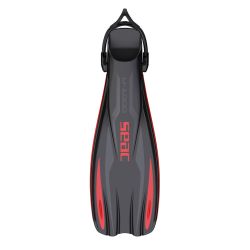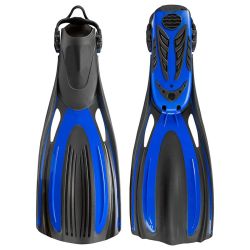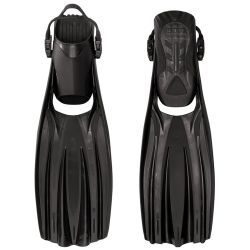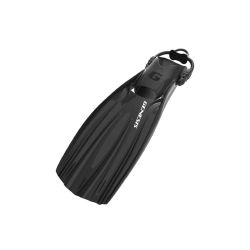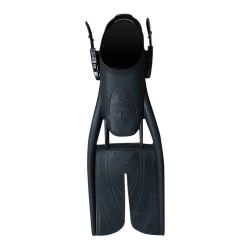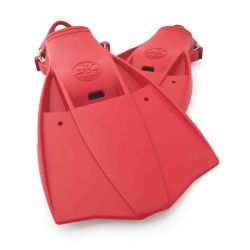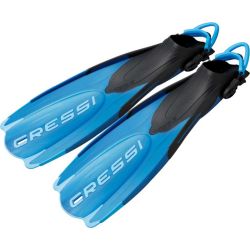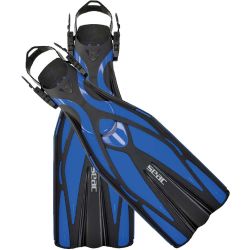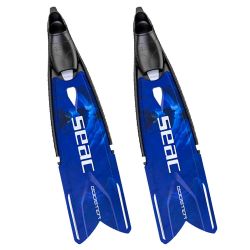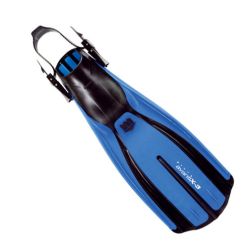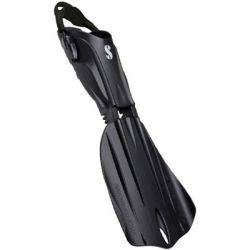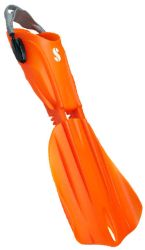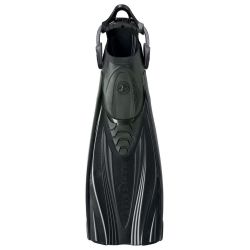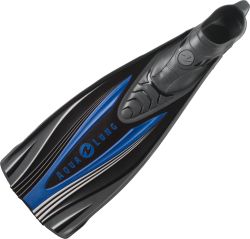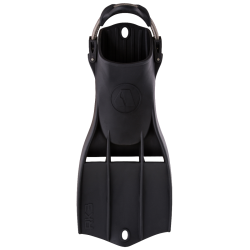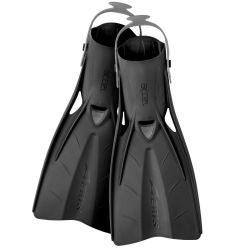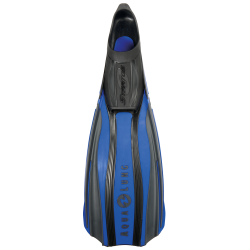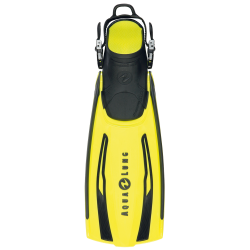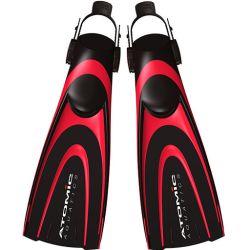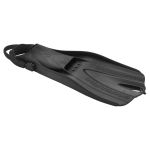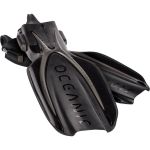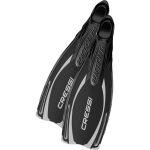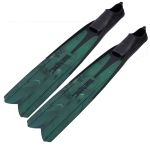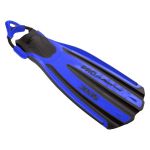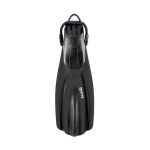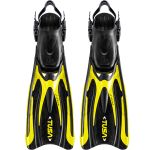We use cookies to enhance your experience on our website. By clicking “I Agree,” you consent to our use of cookies in accordance with our Privacy Policy. If you choose not to allow cookies on our website, some of the website’s functions may not be available to you. Learn more.
Scuba Fins
Scuba fins, also known as flippers, are essential equipment for scuba divers. They are designed to help divers propel themselves underwater with minimal effort and energy expenditure. Fins help you make the most of your energy because they allow you to thrust yourself into the water. When you use less energy, you breathe less actively which means your air tank lasts longer. That means your scuba diving exploration gives you more time to discover underwater magic.
Scuba fins translate leg motion into smooth and efficient forward movement, allowing divers to navigate currents, explore, and interact with the underwater environment.
There are so many different types of scuba fins, from split fins or open-heel fins to soft or stiff blades. If you are lost amidst the wide choice of scuba fins, here is a guide to help you make the right choice for you.
You Need the Right Fin for You
Depending on how and where you choose to scuba dive, you will find the right fin for your needs. This will give you the confidence to go underwater and the necessary safety and comfort during your dive. The correct type of fins can enhance stability, control, and energy efficiency. The whole point of you scuba diving is to have a good and rewarding experience and fins can give you just that.
Types of Scuba Fins
Open-Heel Fins
Open-heel fins have an adjustable strap to accommodate different foot sizes. Most divers choose open-heel fins if they are diving in cold water and they are wearing boots or booties to keep them warm. An open-heel fin is easier to put on with such heat-preserving equipment. Open-heel fins are more versatile but can be bulkier to move around.
Full-Foot Fins
Full foot fins fit snugly around the foot without a strap and they cover the whole heel area, a little bit like slippers. They are ideal for warm water scuba diving where you don’t need to wear boots or any warm footwear. They are lighter and more hydrodynamic than open-heel fins but need to fit properly otherwise they can cause blisters.
Full-blade fins
A full-blade fin is the traditional fin with a blade that pushes the water away as you propel yourself. The blade is undivided.
Split Fins
In the case of split fins, the blade is divided into two parts, down the middle of the blade. This reduces water resistance and helps propel you with the least amount of strength. Because split fins require less direct power from the leg, they are suitable for divers with knee or ankle issues.
Factors to Consider When Choosing Scuba Fins
With so many fin choices available to you, it’s easy to get lost when you are about to choose the right fin for your scuba diving needs.
Diving environment
Most scuba divers have a specific range of areas they like to explore. Water temperature can guide you in selecting the right fin type for you.
If you like to scuba dive in warm temperatures, full-foot fins are more suitable as you won’t need to wear boots and booties. Open-heel fins with booties offer better protection in cold waters.
Likewise, if you are swimming in strong currents, you want rigid fins, which provide better control and power and help you stay your course.
Diver’s experience and style
Your diving skill will also determine the type of fin you require.
Softer fins are easier to maneuver and more forgiving for beginners. Stiffer fins offer experienced divers more control but are more difficult to navigate.
Also, consider the type of diving you will be doing, such as cave diving or wreck diving, to choose fins that complement the specific needs and techniques required.
Materials and construction
Fins come in a variety of materials and technology has helped us develop top-of-the-range fins.
Plastic fins are the sturdiest and cheapest and they are durable and reliable. However, they are heavy.
You can find fiberglass fins that are easier to maneuver and more reactive to the kick of the leg but less durable.
The latest and most expensive fins are made of carbon fiber. They are the most reactive and responsive fins but can also be more fragile than plastic ones.
Flexibility and rigidity
You will find ultra-soft, soft, medium-soft, and rigid fins. The flexibility of the fin affects how much effort is needed to kick. Beginners prefer ultra-soft fins because they are more responsive. Rigid fins provide more thrusting power but may be tiring for long dives.
Fit and comfort
Each diver is unique so you should choose the fin type that helps you enjoy your scuba diving experience.
Full-foot fins should be perfectly sized otherwise they might cause blisters. Some divers prefer the warmth and protection of booties with open-heel fins, while others prefer the snug fit of full-foot fins.
Budget
Quality fins can be found at various price points. Consider investing in a durable pair that fits your specific needs and diving style.
Additional Tips and Advice
Consult with professionals
Dive shop staff and instructors have hands-on experience and can provide personalized recommendations. Fins are a significant part of your scuba diving equipment and you should choose them carefully.
Maintenance
Regularly rinse in fresh water and avoid prolonged sun exposure. Sunlight can cause cracks in your fins and discolor them.
Store them properly to maintain the fins' integrity. Don’t place your fins in a position that bends the blade permanently as it’s very hard to return the blade to its original state. An undulating fin won’t have the right propelling power when you scuba dive.
Choosing the Right Pair of Scuba Fins
Choosing the right pair of scuba fins is a crucial decision that impacts a diver's overall experience and safety underwater. The main content of this guide covers the aspects to consider when selecting scuba fins.
Consider factors such as the diving environment, personal preferences, fit, and budget so you can find the perfect pair that enhances your underwater exploration.
Interested in a top-notch pair of scuba fins like the Mares Avanti Quattro or the Cressi Frog Plus? Explore our shop for an excellent range of scuba fins that can help you to make the most of your time in the water. Our excellent customer service and effective return policy guarantee customer satisfaction.
Frequently Asked Questions
How do I find the right size for my scuba fins?
To maximize your comfort and efficiency, consider carefully your scuba fins’ size. Open-heel fins offer more adjustability and are typically worn with booties, so consider the bootie thickness when selecting a size. You may have to choose one size up.
Full-foot fins should fit snugly but not too tightly. It's a good idea to consult sizing charts provided by manufacturers and, if possible, try the fins on at a dive shop with the assistance of a professional. Remember that the fin shouldn’t sit against your ankle because it will scratch it as you wear it and cause skin irritation. For comfortable and extended use of the fin, the foot pocket should be anatomical and allow easy foot insertion.
Can I use snorkeling fins for scuba diving?
While snorkeling fins may look similar to scuba fins, they are generally lighter and less rigid. Snorkeling fins are designed for surface swimming and may lack the power and control needed for scuba diving. They can be used for casual shallow dives, but it's advisable to use fins with side rails specifically designed for scuba diving for the best performance and safety.







